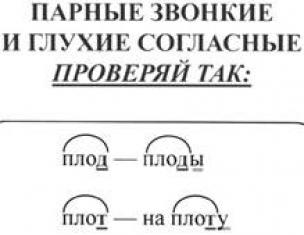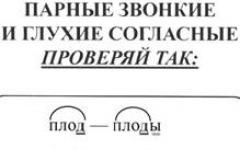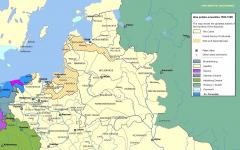Wheat grains are used to make not only flour for baking bread, but also cereal for cooking porridge. The cereal from which the porridge is prepared is wheat grains crushed by crushing. Grinding can be coarse, fine and medium; it does not affect the valuable properties of the cereal.
Mothers are interested in whether wheat porridge is good for children, at what age it can be given to children, how to choose the right cereal and prepare porridge from it.
Wheat has been known to mankind for a very long time. How cultivated plant This cereal began to be grown in the Middle East about 10 thousand years ago. At the beginning of our era, wheat was distributed throughout Africa and Asia, in the 16th century. it began to be grown in Europe. Currently, no cereal plant has as many varieties as wheat.
Composition and calorie content
The range of useful substances in wheat cereal is very rich.
100 g of cereal contains:
- carbohydrates 70 g;
- fat 1 g;
- proteins 16 g.
Most of the carbohydrates are starch (50 g/100 g); cereals contain less simple sugars.
- Proteins include nonessential and essential amino acids (proline, valine, tryptophan, phenylalanine, isoleucine, glutamic acid).
- The vitamin composition of the cereal includes vitamins, K, H, PP, niacin,.
Wheat cereal contains macroelements:
- potassium;
- chlorine;
- sodium;
- phosphorus (250 mg/100 g);
- (250 mg/100 g);
- sulfur (100 mg/100 g);
- silicon.
An even more extensive set of microelements:
- manganese;
- copper;
- aluminum;
- cobalt;
- vanadium;
- titanium;
- nickel;
- molybdenum;
- selenium;
- tin;
- zirconium;
- strontium.
The energy value of 100 g of wheat cereal is 335.5 kcal. 100 g of viscous porridge cooked in water contains only 65 kcal, 100 g of crumbly porridge - 100 kcal.
How to cook
Summary for parents
Wheat porridge is not only a nourishing and tasty food for a child. It will serve as a source of healthy proteins, fiber, and provide the body with minerals and vitamins. But you can introduce it into your baby’s diet only after a year (sometimes later). It is absolutely not suitable for feeding infants.
Properly selected cereals, following the rules for preparing porridge and introducing it into the menu will benefit the child’s body.
The millet from which millet porridge is prepared is the seeds of the cereal plant millet. It began to be grown in China several thousand years ago - even earlier than rice.
Millet porridge is less popular in baby food than other types of cereal dishes. But mothers are interested in how useful this porridge is for children, can it be given to babies, what millet dishes can be prepared for a child?
Millet grains differ in color: it can be white, gray, beige, yellow, red. The color of the cereal affects the taste and quality of the prepared dish: richly colored cereals taste better, porridge made from grains light color will not be crumbly.
There are such varieties of millet cereals:
- Dranets: These are shiny whole grains without a shell, with a bitter taste. Cooking dishes from dranets requires a longer time.
- Polished millet is a matte bright yellow peeled grain. They contain the maximum amount of useful substances, and dishes are prepared quickly.
- Crushed millet is a product of processing grains, their fragments. Its shelf life is very short. Prepares quickly.
- Millet flakes are a heat-treated product; there is no need to cook it.
Composition and calorie content
Due to its unique composition, millet groats were previously called golden
Millet cereal contains a unique composition of nutrients, a supply of vitamins and minerals. It is no coincidence that in ancient times it was called golden.
The main component of millet is starch, it makes up almost 70% of the grain. make up 15%, they include:
- essential (lysine, leucine, valine);
- nonessential amino acids.
Fats including unsaturated omega-3s fatty acid and polyunsaturated omega-6, depending on the millet variety, vary from 2.5% to 3.7%. The content of healthy vegetable fats is higher only in oatmeal.
- pectin;
- purines (substances that can be converted into uric acid);
- phytosterols (substances that can dissolve in fats and regulate the level of good and bad cholesterol).
Minerals contained in millet are:
- phosphorus;
- copper;
- silicon;
- potassium;
- manganese;
- vanadium;
- molybdenum;
- selenium;
- cobalt;
- gray;
- nickel;
- zirconium;
- boron;
- rubidium;
- strontium;
- chrome.
There is more protein and B vitamins in millet than in many other cereals. In terms of the amount of magnesium and molybdenum, millet is the leader among cereals. It contains 1.5 times more phosphorus than meat.
The calorie content of 100 g of millet cereal is 153 kcal. The energy value of millet porridge depends on the method of its preparation:
- 100 g of it, cooked in water, will give 90 kcal;
- on - about 120 kcal;
- porridge with pumpkin - only 70 kcal.
Benefit
Millet has a gentle effect on the digestive tract - in this it can hardly find a competitor among cereals.
The ingredients of millet cereal provide a versatile effect on the body:
- Silicon, fluorine and phosphorus ensure the development and strength of the skeletal system.
- Vitamin B1 (thiamine) and phosphorus are essential for normal brain function. The beneficial effects of B vitamins contained in millet porridge will reduce restlessness, anxiety and irritability, and a feeling of fatigue in children.
- Plant proteins and millet amino acids contribute to the intensive development of muscle tissue.
- Millet, with the help of pectin and fiber, will help the body get rid of toxins and toxic substances.
- Increased sweating and a slight diuretic effect will help remove excess fluid from the body.
- Vitamin and mineral composition of millet when it is regular use enhances reparative processes, accelerates wound healing, fusion of injured bones and cartilage.
- Vitamins PP, B 2 (riboflavin), and the microelement zinc will ensure healthy skin, maintain its elasticity and relieve irritation, relieve dandruff, and improve the condition of nails and hair.
- Folic acid (vitamin B 9) and iron are important for hematopoiesis, they help in the treatment and prevention of anemia in children. By the way, there is more folic acid in millet cereals than in wheat and corn.
- Pyridoxine (vitamin B 6) and potassium are necessary for the normal functioning of the heart muscle.
- Vitamins and minerals of millet cereals help improve immunity and participate in carbohydrate and fat metabolism.
- The lipotropic effect of the ingredients of millet porridge prevents the accumulation and deposition of fat in the body. Therefore, millet porridge can be given to children with.
Contraindications
Products made from millet cereals are not allergenic; individual intolerance to them is rare. But it is impossible to completely exclude development after their use. Therefore, children prone to allergies should be introduced to millet dishes with caution.
- A temporary contraindication for introducing millet porridge into a baby’s diet may be an underdeveloped digestive system that is unable to digest millet. In these cases, the question of when to introduce it into the infant’s diet is decided by the pediatrician.
- Digestive upset can be caused by improper (too coarse) grinding of millet grains taken to prepare porridge for infants.
- For chronic gastritis with low acidity consumption of millet porridge should be limited.
- Millet porridge should not be given frequently and in case of pathology thyroid gland, since millet contains substances that interfere with absorption.
How to select and store millet
 In order not to burden the digestive tract, children under one year old should cook porridge from millet flour
In order not to burden the digestive tract, children under one year old should cook porridge from millet flour The quality of porridge depends on the cereal chosen for it. When purchasing, it is better to follow these tips:
- It is advisable to buy millet in transparent bags that allow you to see the grains. Cereals sold by weight undergo oxidation under the influence of external factors and lose their beneficial properties.
- It is better to choose cereals made from whole grains rather than crushed ones, since dishes made from them are viscous and less tasty. Porridge made from whole grains, even ground into flour at home, will taste better.
- You definitely need to pay attention to the expiration date of the cereal. You should buy millet that was harvested no more than 6-9 months ago. Stale grains will taste bitter as a result of fat oxidation.
The color of the millet also matters. An indicator of the quality of cereals is the bright yellow color of the grains and their matte surface. Gray and beige shades appear as a result of fat oxidation. Porridge made from such cereals will be bitter, and the child will not eat it.
You should also not store millet for a long time at home. It is easy for moths to grow in it. It is better to keep it in a cloth bag (pre-boiled in a strong saline solution) or in a hermetically sealed container made of glass, earthenware or plastic.
Cereals should be stored in a cool and dry place. Prepared millet flour can be stored in a sterilized glass jar with a lid.
If bitterness appears in the finished dish, then the millet should be doused with boiling water (or heated in a frying pan, preventing the color from changing).
How and when to introduce it into a child’s diet
After a year, you need to take half a glass of millet flour per 200 ml of water and cook until tender. You can improve the taste by adding butter, berries and fruits.
Millet porridge with milk
For older children, it is prepared from whole grains:
- Well washed (until the water is clear) millet (1 cup) should be poured into a saucepan with water (400 ml).
- After boiling, remove the foam and reduce the heat.
- Cook while stirring until the water disappears.
- Boil 400 ml of milk and add it to the porridge.
- Add a little salt (if desired, you can sweeten the porridge with 2 tablespoons of sugar) and cook it while stirring until thickened over low heat.
- Add butter (25-30 g) to the porridge and remove from heat.
Instead, you can add it to the finished porridge if you are not allergic to it.
Puree soup with millet in vegetable broth
- Take 1 tbsp. l. washed millet, add water and cook until tender (possibly in a Turkish pot) over low heat.
- Place chopped vegetables (2-3 medium-sized, 1 medium-sized) into another saucepan, add water and cook until tender.
- Grind the vegetables and porridge in a blender until pureed.
- Add boiled milk (200 ml) to the resulting mass, bring to a boil, remove from heat.
- Add salt to taste; if desired, you can add dill and parsley.
- Add (15-20 g) before serving.
Millet porridge with pumpkin
Preparation:
- Rinse half a glass of millet hot water, place in a saucepan.
- Cut approximately 150-170 g of peeled pumpkin into small cubes.
- Add pumpkin to millet and add hot water.
- After boiling, remove the foam and add salt, cook until the water boils (the millet is still hard).
- Add 200 ml of hot boiled milk and simmer over low heat, covered, until the porridge is ready.
- Butter is added to taste, you can also add steamed raisins.
Summary for parents
 Children will surely enjoy beautiful, healthy and tasty millet porridge with vegetables.
Children will surely enjoy beautiful, healthy and tasty millet porridge with vegetables. Millet can not only quickly satiate a child, but also provide him with nutrients - vitamins and microelements necessary for a growing body.
Millet porridge is a source of valuable vegetable protein and healthy vegetable fats for a child. It will provide children of any age with a supply of energy, improve digestion, and ensure the normal function of many organs and systems.
The product can cause possible harm only if the recommendations of specialists are not followed.
Nutritionist Lidia Ionova talks about the properties of millet porridge:
Many people mistakenly believe that millet and wheat are the same thing. However, millet groats are actually millet seeds. Since this product has a large amount of useful vitamins and microelements, and is also less likely than others to cause an allergic reaction, millet porridge is often used as baby food. In this article we will look at the benefits it brings to the child's body, possible contraindications and recipes for preparing millet porridge.
Features of millet cereals
As a rule, all cereals place a significant burden on the digestive system, but not millet cereals. It is this property that explains the addition of this product to the diet of people with stomach diseases. Most of the composition of millet is starch. It is about seventy percent, which includes fifteen percent protein and vital amino acids (valine, leine, lysine). The fat content of millet cereals can vary from two and a half to three percent. Sugar takes up only two percent.

Among microelements, a significant silicon content can be noted. This substance is extremely useful and necessary for the proper development of human bones and skeleton, especially for the small growing body of a child. Phosphorus, present in millet, enhances the effect of silicon and promotes brain activity. Also he doesn't play last role in strengthening the heart and blood vessel walls. Thanks to the B complex of vitamins, the brain is activated, the immune system is strengthened and carbohydrate metabolism is stimulated. In terms of fat content, millet groats are significantly inferior to oat groats. The amount of protein in millet is greater than in the same porridges made from rice or barley. There is much more vitamin B9 contained in millet porridge than in porridges made from corn or wheat groats. Also, millet is extremely necessary for iodine deficiency in the body or diseases of the thyroid gland. The composition of millet is also rich in zinc, sodium and bromine.
For infants - children 1 and 2 years old, such porridge is undesirable.
For a one-year-old child, it is, first of all, tasteless, and allergies can also occur.

Benefits and contraindications
First of all, millet porridge is healthy for babies due to its rich protein and amino acid content. It is thanks to them that intensive development of muscle fibers occurs, as well as strengthening of bones and skeleton. The presence of fiber in the composition helps to cope with constipation in the baby. Millet, from which millet cereal is produced, has special substances that help remove antibodies from the body that form during the course of any disease. In this regard, doctors introduce this product into the diet of a sick baby. Millet porridge is a kind of additional remedy in treatment, where antibiotics are already involved. This type of cereal helps and does not reduce the effect medical product, but also prevents excess toxic substances from accumulating in the body. The great benefits brought by the consumption of millet are explained by the presence of the lipotropic effect that it has on the human body.

The beneficial properties of millet are as follows:
- it helps remove excess fluid and relieve swelling;
- has a diuretic effect on the human body (it is recommended to use it in the presence of a disease such as dropsy);
- if an inflammatory process occurs in the pancreas, it is necessary to consume millet at least once a day;
- promotes healing of injured bone, cartilage tissue and various wounds;
- the condition of the skin improves if you add millet to the diet (this is due to the rich content of vitamins and minerals, and the skin acquires firmness, elasticity, and resistance to various types of inflammation);
- the presence of a vitamin B complex in millet cereals helps reduce the nervousness and temper of a restless child;
- that with regular consumption of millet, the baby develops an appetite (this has been noted by many parents);
- millet is a rich source of microelements such as iron;
- its excellent compatibility with the group of B vitamins improves the process of hematopoiesis in the human body;
- copes well with removing poisonous and toxic elements (heavy metal ions) from the body.

As mentioned earlier, cereal crops are quite common cause occurrence of an allergic reaction. Millet is the weakest allergen of all possible cereals used for making porridges. Usually, allergic reaction occurs exclusively in children. This is due to the fact that the baby’s digestive organs are not yet strong enough.
You will learn more about at what age you can introduce millet porridge into your baby's complementary foods below.

Introducing millet porridge into baby's complementary foods
Experts recommend that parents of their baby introduce millet porridge into complementary foods after he has been taught to eat buckwheat or rice porridge. A baby on artificial nutrition can start eating millet porridge as early as the seventh or eighth month. With natural nutrition, it is recommended to introduce millet from eight months to nine months of age. Despite the fact that millet cereal rarely causes an allergic reaction in a child, it is still advisable that the first portion be no more than one tablespoon. Later, the portion of millet must be increased, naturally, in the absence of any unpleasant reaction from the child’s body. Ultimately, you should get a portion the volume of which will be one hundred and fifty to one hundred and seventy grams per meal.

There are several tips regarding the introduction of this product into a baby's complementary feeding:
- For the first tasting, it is advisable to cook the millet porridge so that it has a liquid consistency. To do this, increase the volume of water or baby formula.
- It is recommended to serve millet for breakfast for the first time. This way you will have the opportunity to observe the body’s reaction to this product throughout the day.
- In the absence of an allergic reaction, the portion of millet porridge should approximately double with each meal.
- In order to diversify your child’s diet, cook soup from millet instead of porridge.

When the child turns two years old, boiled pumpkin, prunes or various fruits can be added to the millet. And make a delicious casserole from millet. For an eight- to ten-month-old baby, it is recommended to first grind the millet cereal before cooking. To do this, use a coffee grinder.
For older children, it is permissible to cook porridge from larger millet. However, whole millet grains are acceptable for children over one year of age.

Preparation
For the traditional recipe for preparing millet, you need to acquire: two hundred grams of cereal, thirty grams of cold-pressed vegetable oil, four hundred low-fat milk, two tablespoons of granulated sugar (or honey), four hundred milliliters of boiled water and a pinch of salt.


The algorithm for preparing millet is as follows:
- The cereal is thoroughly washed two to three times in water until the water becomes clear. Since millet cereals tend to have a bitter taste, before cooking, it is advisable to soak them for thirty minutes in cold water. This will get rid of the unpleasant taste. Next, the cleaned millet is poured into a pan with a tight bottom and filled with water. The power of the burner should be medium.
- When the water boils, you will need to remove the resulting foam and reduce the power of the burner. Continue cooking the millet until the water begins to evaporate.
- Meanwhile, boil the milk separately and pour it into the porridge being prepared in a small stream. Reduce heat again.
- Before the cereal has time to swell, add salt and granulated sugar (or honey). The cooked porridge becomes very thick, so it is necessary to sweeten the dish in advance.
- Then remove the pan from the stove and season with vegetable oil, since millet tends to have a dry texture.
When preparing millet for a baby less than one year old, you will need to almost double the volume of milk used, or reduce the amount of millet.
During the cooking process, regularly stir the contents of the pan, this way you will avoid burning the cereal towards its walls.



In order to diversify your baby’s diet, try preparing a tasty and healthy soup for him using millet and vegetable broth. Of the ingredients you will need to get: three medium-sized potatoes, small carrots, parsley, two hundred milliliters of milk, one tablespoon of millet, dill, a pinch of salt and twenty grams of low-fat sour cream.
For getting delicious soup, you must strictly follow the sequence of the following actions:
- Millet cereals are washed and poured into a pan. Then water is poured in. You must wait until the water boils.
- Meanwhile, in a slightly larger saucepan, you need to cook pre-finely chopped vegetables. To make the broth richer, it is advisable to take a smaller volume of water so that it barely covers the vegetables.
- Then the boiled vegetables and millet are poured into a mixer bowl and thoroughly crushed until a puree consistency is obtained.
- The resulting mass is poured with pre-boiled milk and brought to a boiling state. After which the finished soup is removed from the stove.
- It is advisable to add salt upon completion of cooking. Depending on your preferences, you can add greens. Sour cream is added before you feed the baby.



Another tasty and healthy option involves adding pumpkin to millet porridge. The ingredients you will need are one hundred and fifty grams of pumpkin, a tablespoon butter, a pinch of salt, milk (or water) - two hundred milliliters, half a glass of millet. First, do not forget to thoroughly rinse the cereal and vegetables. Then the pumpkin is cut into small cubes and placed together with the millet in a pan. The contents are filled with water (or milk) and brought to a boil.
As in the first recipe, you will need to remove the resulting foam and add a pinch of salt. Then you need to wait until all the liquid has evaporated. After which you can add pre-boiled milk, it should be hot. Be sure to cover the pan with a lid and leave the contents to simmer for the next ten to fifteen minutes. Before feeding your baby, it is advisable to season the millet with a spoon of butter. The porridge will be delicious and nutritious!
You will learn more about how to prepare millet porridge from the following video.
Every mother who has a baby is concerned with the question: what complementary foods should be introduced to the baby and at what age? Porridge is considered one of the main types of food for children after six months. But are all of them allowed to be consumed for up to a year? What are the benefits and harms of a particular porridge? How much should they be given to infants? More about this in the article.
Classification of cereals:
- By type of cereal: rice, buckwheat, corn, semolina, oatmeal, millet, wheat, barley, pearl barley.
- Dairy and dairy-free.
- Gluten (containing cereal protein - gluten) and gluten-free. Cereals: buckwheat, rice, millet and corn grits belong to the gluten-free group.
- Homemade and store-bought.
At the beginning of complementary feeding, porridge should be dairy-free, gluten-free and consist of only one grain. Most often, rice or buckwheat. Then corn is gradually added. The rest of the cereals at the age of 6–7 months It is not recommended to consume them because they contain gluten, which often causes allergies.
Approximately from 8 months you should gradually begin to introduce oatmeal and multigrain cereals.
From 9 months You can try millet, barley, pearl barley, wheat porridge.
Semolina is usually included in a child’s diet last - after 1 year.
For babies aged 6–8 months, porridge is prepared with water or breast milk. Whole cow's milk is not added due to the risk of an allergic reaction. From 9–10 months you can cook a dish with milk and half and half water. It is better to start consuming all-milk cereals only from 1 year of age.
Which cereals are better to choose: homemade or store-bought?

This depends on several factors: the baby’s taste preferences, the mother’s financial capabilities and whether she has time to prepare the dish.
Arguments for buying porridge in bags:
- most of them are hypoallergenic (do not contain gluten, sugar, preservatives, milk components);
- they are enriched with vitamins (however, many mothers do not consider this beneficial, since all vitamins are chemically produced, and therefore choose a product without additives);
- prepare them conveniently and quickly;
- The ready-made store product has a liquid consistency, which is suitable for children under one year old.
Arguments for homemade porridge:
- the composition of the dish is formed by the mother herself (there are no questionable components, you can add the necessary ingredients at your discretion);
- inexpensive in cost;
- they have a longer shelf life than store-bought products;
- The thicker consistency of homemade porridge promotes the development of the child’s chewing muscles.
Useful properties of cereals
Gluten-free cereals
The safest because they do not contain vegetable protein gluten and are suitable for feeding the youngest (from 6 months).
- Rice. Rich in carbohydrates, which are well absorbed by the body.
- Buckwheat. Contains B vitamins, iron, magnesium, zinc, copper. Improves performance digestive system due to the large amount of fiber. Due to its rich iron content, it reduces the risk of anemia in a child. Prevents constipation and effectively removes harmful substances from the body.
- Corn grits. In its composition a large number of vitamins of group B, A, E, PP, iron, starch. It helps improve intestinal function, helps eliminate flatulence and colic.
- Millet. It contains a lot of fiber, protein, B vitamins, PP, zinc, potassium, and iron. Positively affects work circulatory system and liver, removes toxins.
As the baby grows up, it’s time to gradually accustom him to more “adult” and varied foods. Suitable for children from 8 months.
- Oat groats– a valuable source of phosphorus, calcium, vegetable protein, fiber, vitamins B1, B2. Helps strengthen bones and teeth, has a beneficial effect on the functioning of the nervous system.
- Barley cereals (barley and pearl barley) contain vitamins B, A, E, PP, potassium, calcium, iron, fiber. Porridge helps remove harmful substances from the body, improve the functioning of the digestive system, and strengthen the immune system. Helps cope with allergies.
- Wheat groats. Stimulates metabolism, improves the functioning of the gastrointestinal tract, removes harmful substances from the body.
- Semolina. It is well absorbed, rich in vitamins B, PP, vegetable protein and starch, which give the body growth and energy. Porridge is very filling and high in calories.
How to properly introduce porridge into your baby’s diet?

For preparation, take 5 g of cereal per 100 g of water. You need to start introducing the porridge with ½ teaspoon in the morning, carefully monitoring the baby’s reaction. If there is no allergy, then the volume of the dish is increased to 150 g over the course of a week. Then the concentration increases and amounts to 10 g of porridge per 100 g of water.
How to cook porridge for babies
The cereal must first be washed and dried. Before cooking, grind in a coffee grinder or blender. Then pour it into either cold water (for example, rice or buckwheat) or boiling water for cooking.
Cook the porridge over low heat, stirring constantly. Cooking time depends on the type of cereal. To give the porridge a brighter taste, you can combine it with vegetables (pumpkin, broccoli) and fruits (apples, pears, bananas).
Once ready you can add breast milk or mixture, vegetable or fruit puree. Until 1 year, salt and sugar are not added.
Comment: better porridge give from a spoon, as this is food close to adult food. When a child eats it from a bottle, the product does not have time to be properly wetted with saliva.
Porridge is a valuable product that affects the full development and gives energy and strength for the growth of the baby. Let your diet become healthier and more varied with them!
Wheat is a common cereal crop. It is difficult to imagine modern life without products made from this cereal. Bakery products are baked from wheat flour and pasta is made. Wheat contains a number of useful substances. However, wheat porridges, unfortunately, are not very popular. Wheat porridge is very healthy for babies, but for certain reasons it is introduced into complementary foods a little later than some other porridges. Let's figure out why.
To turn wheat into wheat cereal, it is crushed and ground. If wheat is crushed to grains of a millimeter diameter, then such cereals will be called semolina. For the production of wheat cereals, different varieties of wheat can be used: spring and winter.
The benefits of wheat cereal are obvious:
- It is healthier than semolina, despite the fact that they are made from the same grain. After all, the less processing the grain has undergone, the more vitamins and nutrients are retained in it.
- Wheat is rich in B vitamins, as well as vitamins A, E, PP.
- Wheat cereal has a lot of fiber. And, as you know, fiber is simply necessary for normal intestinal function. Wheat porridge is a wonderful preventative against constipation in children.
- The substances contained in wheat adsorb and remove harmful substances and waste from the body.
- Regular consumption of wheat porridge strengthens the cardiovascular system and also increases the child’s immunity.
- A whole complex of vitamins contained in wheat takes care of the condition of the skin, hair, vision, and also strengthens the baby’s bones.
- Due to its low glycemic index, wheat cereal can be included in the diet of children with diabetes mellitus and obesity.

Contraindications for use
Wheat porridge has some disadvantages:
- The biggest drawback is the gluten content. Gluten is a protein that requires the presence of gastrointestinal tract some enzymes. Since children under a certain age do not produce these enzymes, gluten is not absorbed by their body and causes an allergic reaction. Therefore, to prevent an allergy to wheat porridge in infants, it is given to children starting from 8-9 months.
- One of the contraindications to eating wheat porridge is celiac disease. This disease is associated with digestive disorders in the small intestine.
- After eating wheat porridge, children may experience flatulence and bloating. Mothers should take this into account and not abuse this product.
We draw your attention to the fact that allergies in infants can manifest themselves not only in skin rashes, but also in increased body temperature, difficulty breathing or irregular heart rhythms.
When and how to give
 When can you give your child wheat porridge? Due to the gluten content in cereals, it is better to postpone introduction to wheat porridge until the age of 8 months. And if a child has previously had an allergic reaction to gluten or other products, then it is better to introduce wheat cereal into the diet after 1 year of life.
When can you give your child wheat porridge? Due to the gluten content in cereals, it is better to postpone introduction to wheat porridge until the age of 8 months. And if a child has previously had an allergic reaction to gluten or other products, then it is better to introduce wheat cereal into the diet after 1 year of life.
The rules for introducing wheat porridge into a baby's complementary foods are the same as for introducing other porridges:
- For the very first time, you should not give more than 0.5 teaspoon of new porridge.
- If there is no negative reaction from the body, the portion of the new porridge is doubled each subsequent time.
- It is best to give new complementary foods in the first half of the day, preferably in the morning.
- Under no circumstances should you introduce several new foods on the same day. Moreover, after the introduction of wheat porridge, 3 weeks must pass before the infant tries another new product.
- To start complementary feeding, wheat porridge is boiled in water. You cannot add sugar, milk, butter, salt, fruits and other ingredients to it. Only wheat cereal and water!
- The consistency of the porridge new to the child should be liquid, almost drinkable.
It is enough to give wheat porridge to children 1-2 times every two weeks. If the baby has an allergic reaction, its introduction into complementary foods should be stopped immediately. After one month, you can try giving your child a small amount of this product again.
Wheat porridge recipes for children
On the water for children 8-12 months
Wheat porridge in water at the beginning of complementary feeding is prepared as follows:
- Rinse the wheat grits.
- Place 1 tablespoon of cereal in a saucepan and fill it with 1 cup of cold water.
- Let the water boil, skim off the foam from the porridge.
- Cover with a lid and leave to simmer over low heat for 20 minutes. The porridge needs to be stirred periodically.
- When the porridge is cooked, cover the pan with a towel and let it stand for 10 minutes.
- Cool the porridge, grind using a sieve and serve to the baby.
It is good to cook porridge from wheat cereals in a slow cooker, so it turns out more boiled and tender in taste.
With milk for children over 1 year old
At what age can you cook porridge with milk for a child? Since we introduce children to dairy products at the end of the first year of life, it is better not to give porridge with milk to babies earlier than 1 year.
Ingredients: 1 glass of water, 1 glass of milk, 0.5 cups of wheat, sugar and salt to taste, butter.
Preparation: wash the cereal. Fill it with cold water and put on fire. After the water boils, skim off the foam and leave the porridge to simmer over low heat under the lid for 10-20 minutes until the water has evaporated. After this, pour the milk into the porridge and cook it for another 10 minutes. At the end add butter, sugar, salt. Grind the porridge if necessary.
Spelled porridge
 Spelled is a variety of wheat. The entire value of this variety lies in the fact that throughout the history of its existence it has retained its originality and has not been subjected to selection. Spelled cereal is considered more useful, since the structure of the spelled spikelet protects the grains from diseases and pests. Spelled also differs from ordinary varieties of wheat in its higher nutritional value.
Spelled is a variety of wheat. The entire value of this variety lies in the fact that throughout the history of its existence it has retained its originality and has not been subjected to selection. Spelled cereal is considered more useful, since the structure of the spelled spikelet protects the grains from diseases and pests. Spelled also differs from ordinary varieties of wheat in its higher nutritional value.
Spelled porridge is available as ready-made porridge. instant cooking. Despite the fact that this product has a number of advantages and does not contain milk, it can still cause allergies because it contains gluten. Spelled porridge is recommended for children who do not suffer from allergies.
Let's summarize
Wheat cereal has a number beneficial properties, thanks to which porridge made from it is recommended for baby food. When introducing wheat or spelled porridge into complementary foods, you should remember that they contain an allergenic substance - gluten. That is why the introduction of these types of cereals is recommended no earlier than 8 months and without adding milk.









